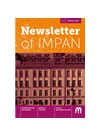A lower bound for the Hanf number for joint embedding
Volume 258 / 2022
Abstract
Baldwin and Boney (2017) showed the authors show that if $\mu $ is a strongly compact cardinal, $\mathbf K$ is an Abstract Elementary Class (AEC) with LS$(\mathbf K) \lt \mu$, and $\mathbf K$ satisfies joint embedding (resp. amalgamation) cofinally below $\mu $, then $\mathbf K$ satisfies joint embedding (resp. amalgamation) in all cardinals $\ge \mu $. The question was raised if the strongly compact upper bound was optimal.
In this paper we prove the existence of an AEC $\mathbf K$ that can be axiomatized by an $\mathbb{L}_{\omega _1,\omega }$-sentence in a countable vocabulary, so that if $\mu $ is the first measurable cardinal, then
(1) $\mathbf K$ satisfies joint embedding cofinally below $\mu $;
(2) $\mathbf K$ fails joint embedding cofinally below $\mu $; and
(3) $\mathbf K$ satisfies joint embedding above $\mu $.
Moreover, the example can be generalized to an AEC $\mathbf K^\chi $ axiomatized in $\mathbb L _{\chi ^+, \omega }$, in a vocabulary of size $\chi $, such that (1)–(3) hold with $\mu $ being the first measurable above $\chi $.
This proves that the Hanf number for joint embedding is contained in the interval between the first measurable and the first strongly compact. Since these two cardinals can consistently coincide, the upper bound of Baldwin and Boney (2017) is consistently optimal.
This is also the first example of a sentence whose joint embedding spectrum is (consistently) neither an initial nor an eventual interval of cardinals. We prove that, for any club $C$ on the first measurable $\mu $, it is consistent that JEP holds exactly on $\lim C$ and everywhere above $\mu $.









